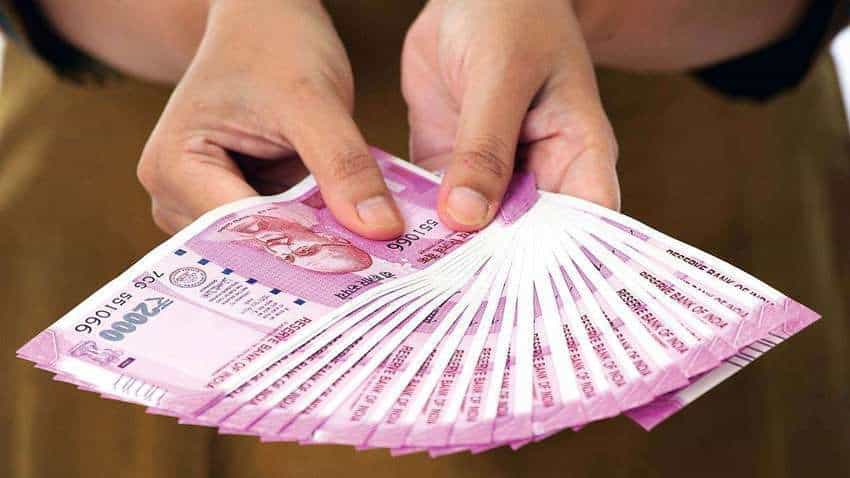PPF vs NPS interest rate: This trick will help you make more money; Here is calculation
PPF vs NPS interest rate: An investor investing in this option will get as much as Rs 50,000 income tax exemption under Section 80CCD, which is different from Section 80C tax.

PPF vs NPS interest rate: The Department of Economic Affairs announcement, made on 31st December 2019, revealed that interest rate on PPF will be 7.9 per cent. Notably, in NPS (National Pension System) too, the interest rate is 7.9 per cent. However, if you want to earn more money, then, instead of PPF, choose NPS! if you opt to increase, via the auto mode, NPS account to the tune of 50 per cent of the net NPS investment, you can easily increase NPS returns by nearly 2 per cent in comparison to the PPF interest rate that has been set just a couple of days ago for 2019-20.
Apart from this, if you have reached the 1.5 lakh investment limit under Section 80C of the Income Tax Act 1961 and anything extra you put in Public Provident Fund (PPF) or any other investment tool listed in Section 80C will attract income tax outgo. Hence, it's better to find other investment tools that would not only attract more returns but an additional income tax benefit.
See Zee Business Live TV streaming below:
National Pension Scheme can do just that as it allows income tax exemption of up to Rs 50,000 in a financial year under Section 80CCD (1B). According to the tax and investment experts, if an NPS investor invests in both active and auto mode NPS accounts in a 50:50 ratio, it will attract an additional 2 per cent return greater than the PPF interest rate 2019-20.
Elaborating upon the NPS trick that can help an investor to beat PPF interest rate in the same period by an additional 2 per cent, Kartik Jhaveri, Director — Wealth Management at Transcend Consultants said, "Due to the equity exposure, if someone chooses the 50:50 option of the equity and the debt options in NPS scheme, in the long run, debt option will give around 8 per cent returns like PPF while the equity exposure would give at least 12 per cent returns in the long-term. Means, if a person invests Rs 100 in NPS scheme's active mode and Rs 100 in NPS scheme's auto mode, you would get 8 per cent returns in active mode while in auto mode returns would be 10 per cent, which is 2 per cent higher than the PPF interest rate."
Speaking on the NPS scheme Manikaran Singhal, a SEBI registered tax and investment expert said, "NPS accounts are of two types — active mode and auto mode. It is also pronounced as Tier-1 and Tier-2 NPS account. Tier-1 is an active mode and Tier-2 is auto mode. In the active mode NPS account, an investor can evaluate returns annually and switch from equity to debt fund and debt funds to equity fund options. While in auto mode, there would be 8 fund managers handling investor's money and making a switch from debt fund to equity funds and vice versa options."
Manikaran said that in NPS scheme, one can have an income tax exemption on NPS investment up to Rs 50,000 under Section 80CCD and this income tax exemption is additional to Rs 1.5 lakh given to each investor for investing in the investment schemes falling under Section 80C of the Income Tax Act 1961.
Get Latest Business News, Stock Market Updates and Videos; Check your tax outgo through Income Tax Calculator and save money through our Personal Finance coverage. Check Business Breaking News Live on Zee Business Twitter and Facebook. Subscribe on YouTube.
RECOMMENDED STORIES

Fundamental picks by brokerage: These 3 largecap, 2 midcap stocks can give up to 28% return - Check targets

SBI Senior Citizen Latest FD Rates: What senior citizens can get on Rs 7 lakh, Rs 14 lakh, and Rs 21 lakh investments in Amrit Vrishti, 1-, 3-, and 5-year fixed deposits

Tamil Nadu Weather Alert: Chennai may receive heavy rains; IMD issues yellow & orange alerts in these districts

SIP+SWP: Rs 10,000 monthly SIP for 20 years, Rs 25 lakh lump sum investment, then Rs 2.15 lakh monthly income for 25 years; see expert calculations

Top 7 Mutual Funds With Highest Returns in 10 Years: Rs 10 lakh investment in No 1 scheme has turned into Rs 79,46,160 in 10 years

SIP vs PPF: How much corpus you can build in 15 years by investing Rs 1.5 lakh per year? Understand through calculations

Retirement Planning: Investment Rs 20 lakh, retirement corpus goal Rs 3.40 crore; know how you can achieve it
07:06 PM IST










 Wealth Guide: Want to become real rich by investing early in residential real estate? Expert suggests these tips
Wealth Guide: Want to become real rich by investing early in residential real estate? Expert suggests these tips  Investing or want to invest in Mutual Funds to become rich? These 5 myths may shatter your dream - Beware of them!
Investing or want to invest in Mutual Funds to become rich? These 5 myths may shatter your dream - Beware of them! Crorepati Calculator: This mutual fund SIP trick will help you get more than double maturity amount — here is how
Crorepati Calculator: This mutual fund SIP trick will help you get more than double maturity amount — here is how Crorepati Calculator: Your Public Provident Fund (PF) account can make you rich in long-term! Follow this expert's tips
Crorepati Calculator: Your Public Provident Fund (PF) account can make you rich in long-term! Follow this expert's tips Crorepati Calculator: Turn your Rs 200 per day savings into Rs 1 cr plus Rs 33,963 monthly pension; here is Money making tip
Crorepati Calculator: Turn your Rs 200 per day savings into Rs 1 cr plus Rs 33,963 monthly pension; here is Money making tip